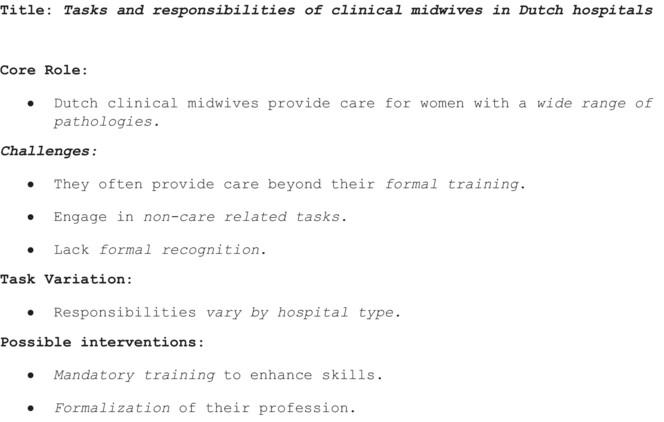Tasks and responsibilities of clinical midwives in Dutch hospitals
Abstract
Background
The number of Dutch clinical midwives has increased substantially over the last 20 years, but their tasks, responsibilities, and formal positions remain unclear. This study aimed to gain insight into the current tasks and responsibilities of clinical midwives in Dutch hospitals. We also aimed to determine whether these tasks varied among three types of hospitals in the Netherlands: secondary nonteaching hospitals, secondary teaching hospitals, and tertiary hospitals.
Methods
A cross-sectional national survey in which a questionnaire was sent to 810 clinical midwives from 78 hospitals was conducted. Responses from 412 (51%) clinical midwives from 77 hospitals were included in the analysis.
Results
Most respondents (97%) provided care in the delivery wards. They were often involved in the induction of labor (88%), requests for pain relief (87%), cases of meconium-stained fluid (59%), prolonged first-stage labor (56%), and maternal hypertensive disorders (43%). Daily tasks and responsibilities were determined by the type of pathology (60%), caseload in the ward (48%), and years of work experience (28%). The tasks varied according to hospital type, and the majority also conducted non-care-related tasks, such as auditing (83%) and teaching (67%).
Conclusions
Dutch clinical midwives play important roles in obstetric care. They provide care for women with a wide range of pathologies they are not always trained for. In addition, they perform non-care-related tasks. Their tasks varied according to hospital type. To ensure that they are both skilled and authorized, compulsory training and formalization of their profession are possible interventions.


 求助内容:
求助内容: 应助结果提醒方式:
应助结果提醒方式:


